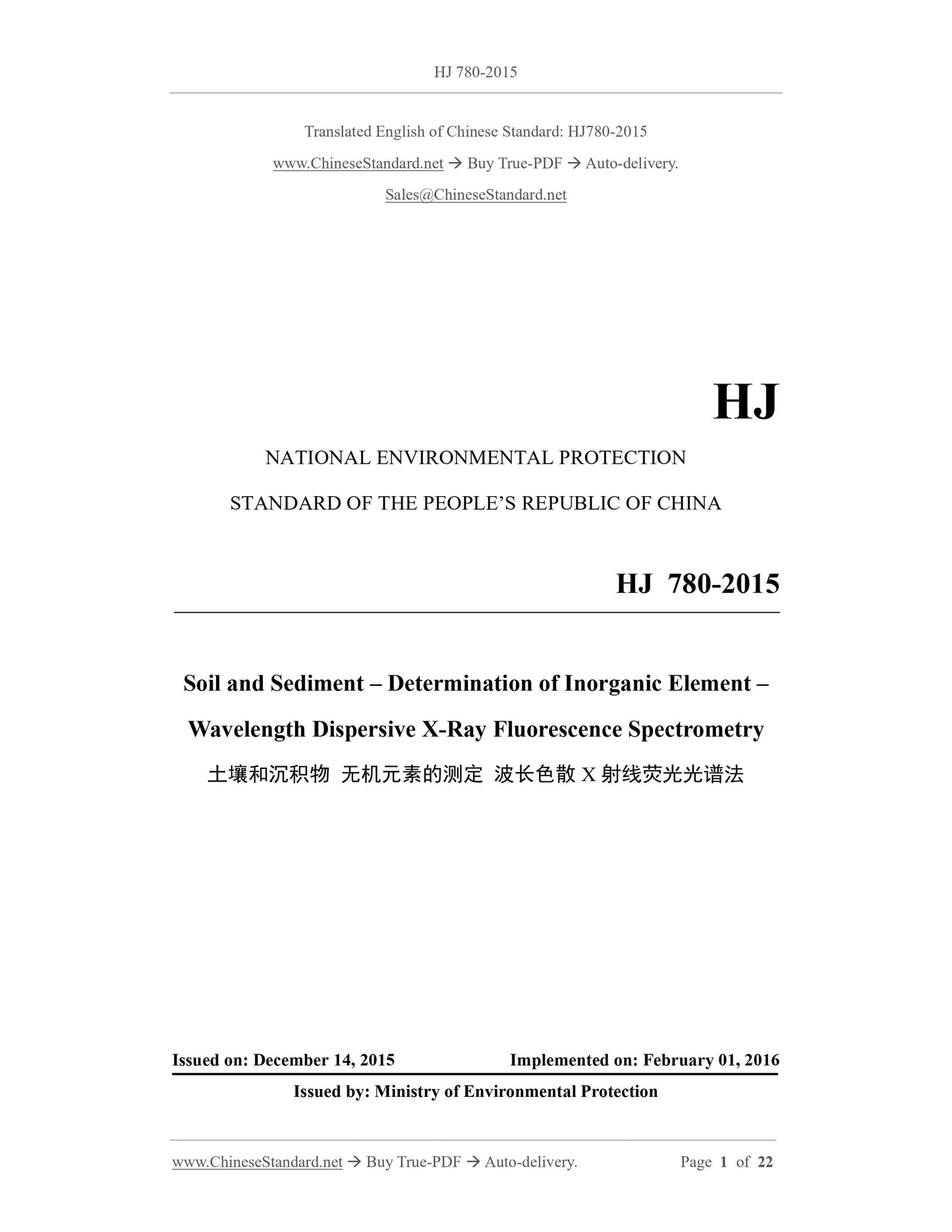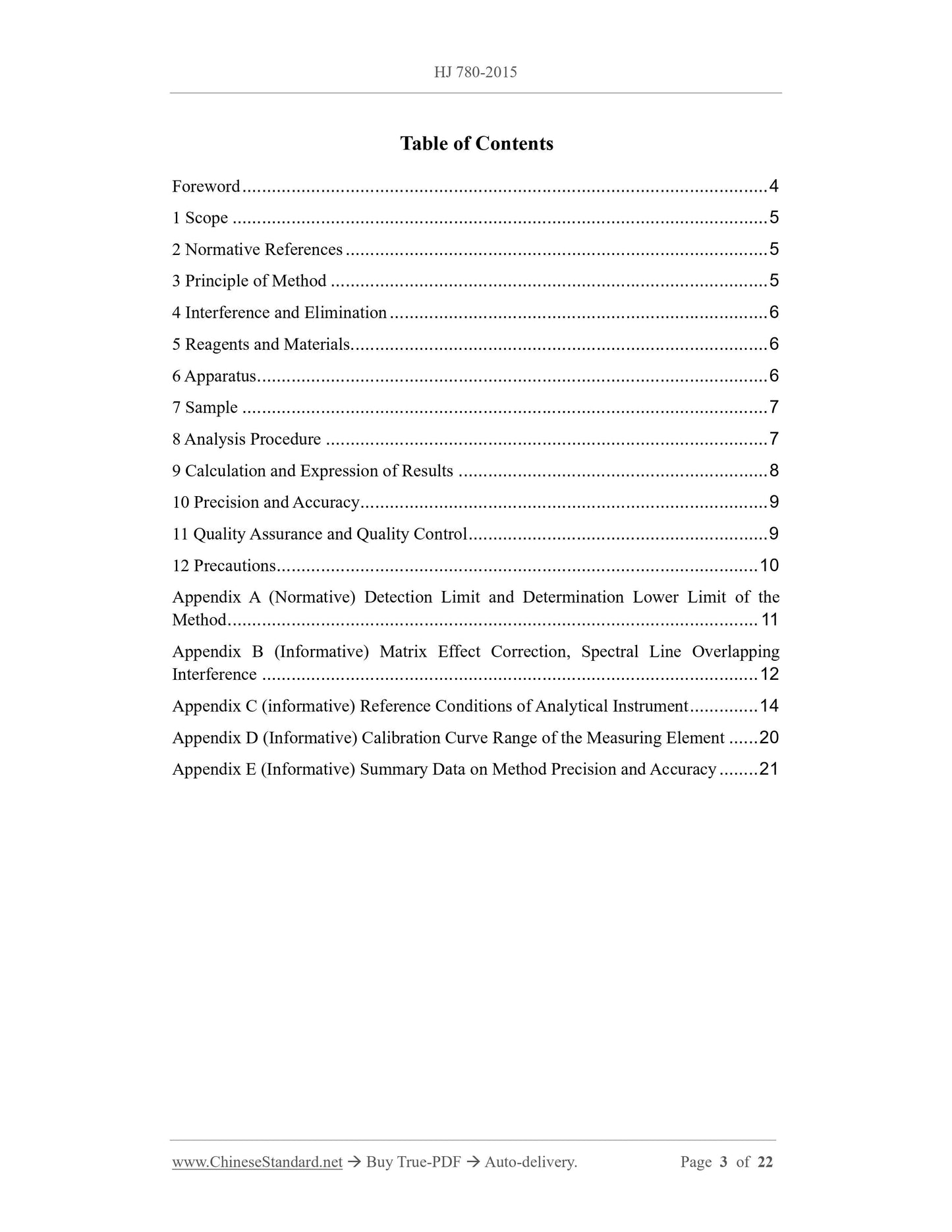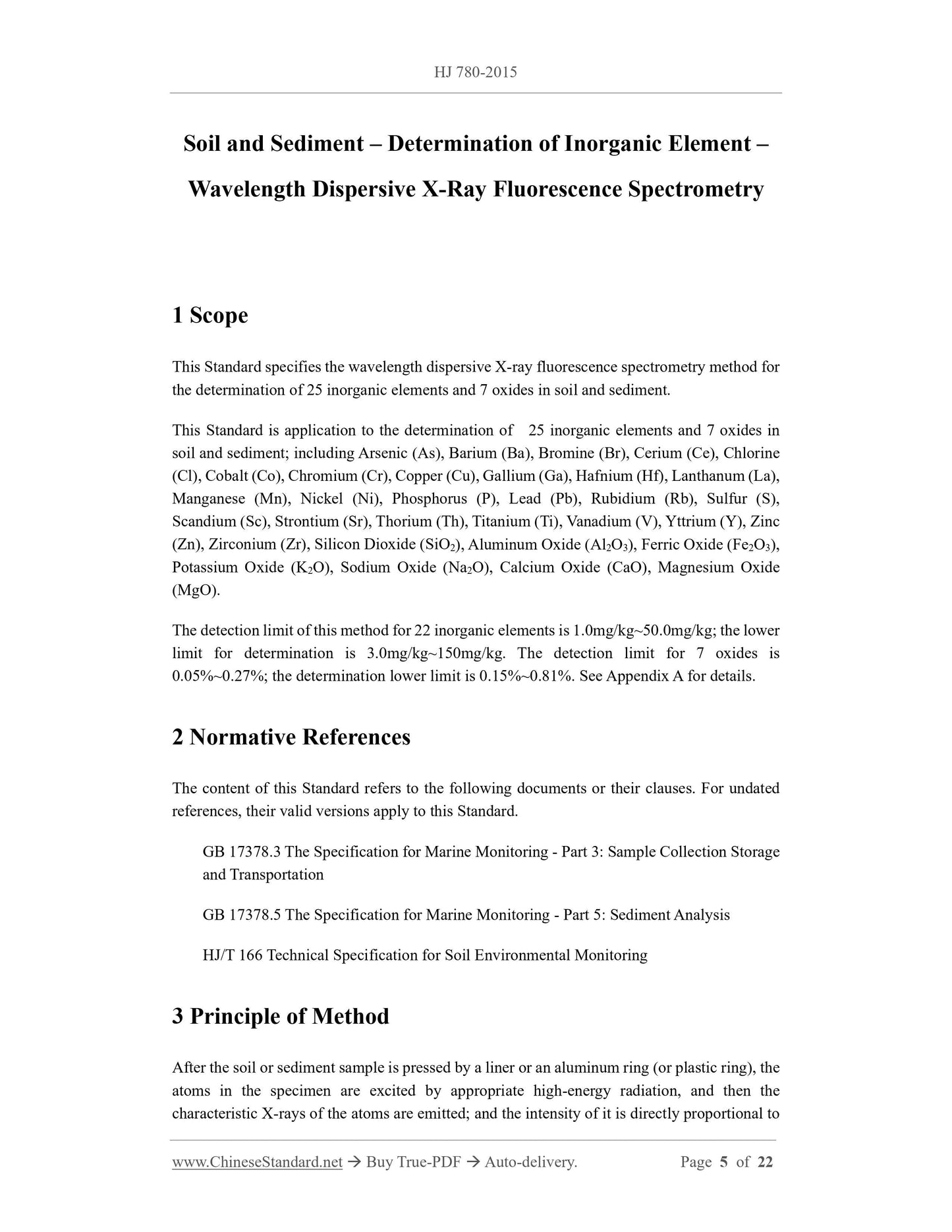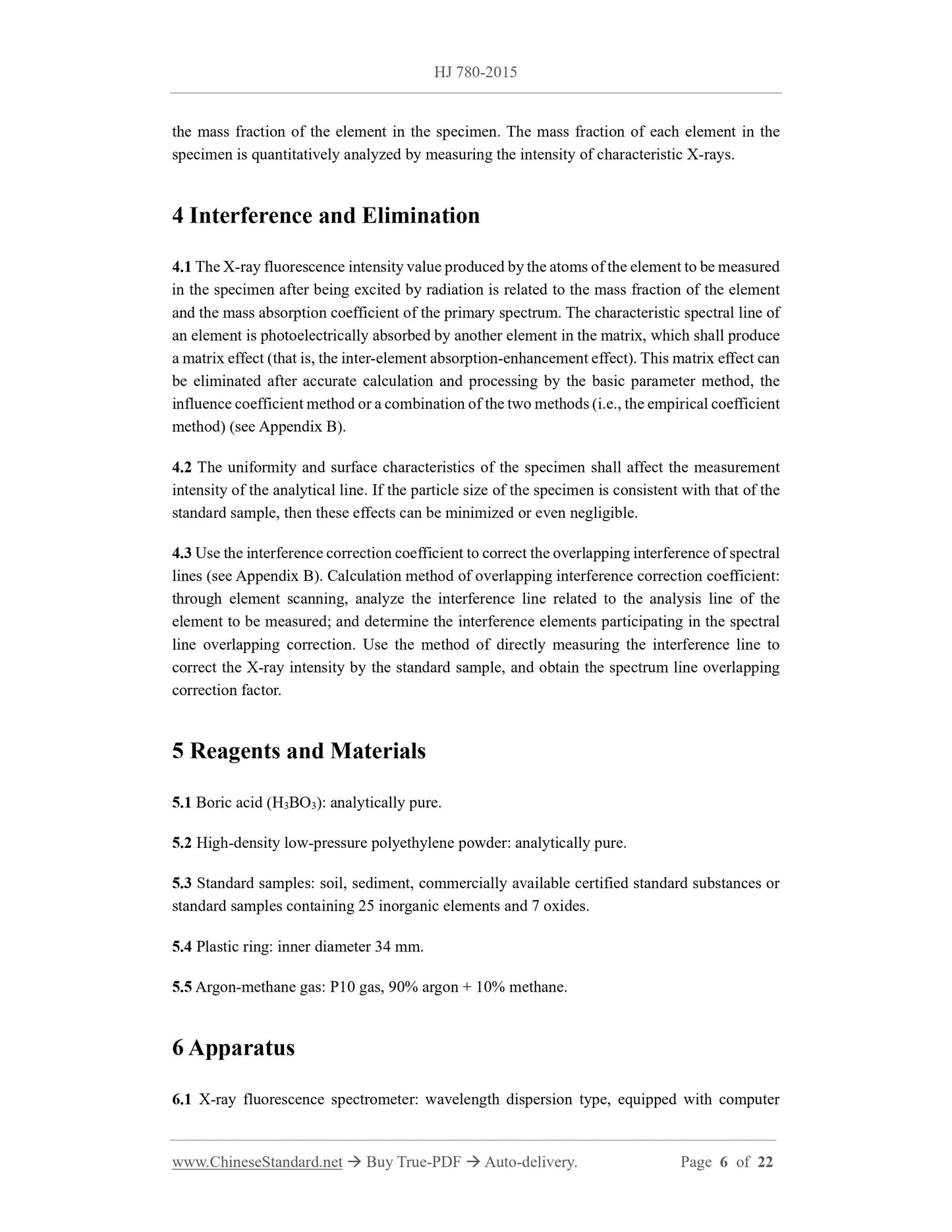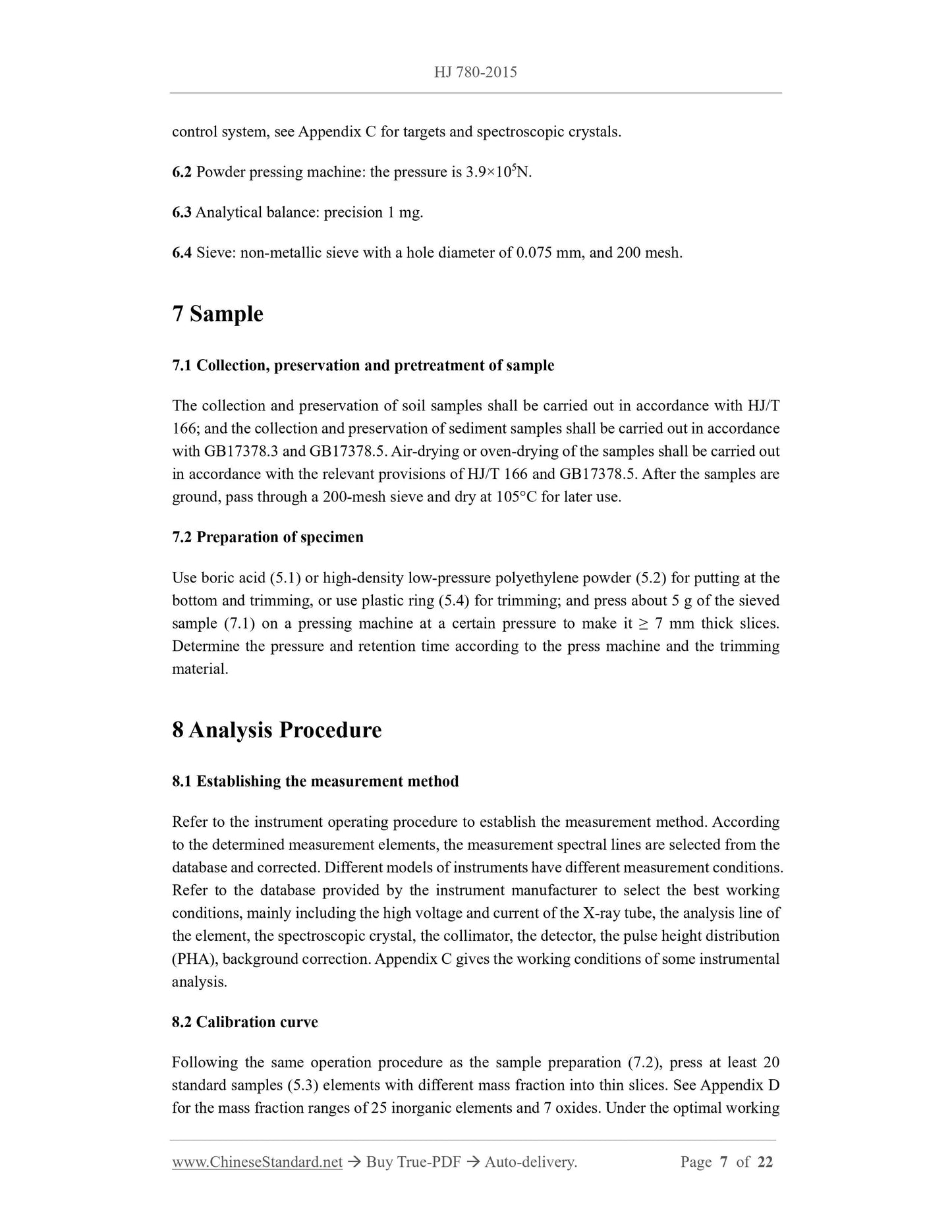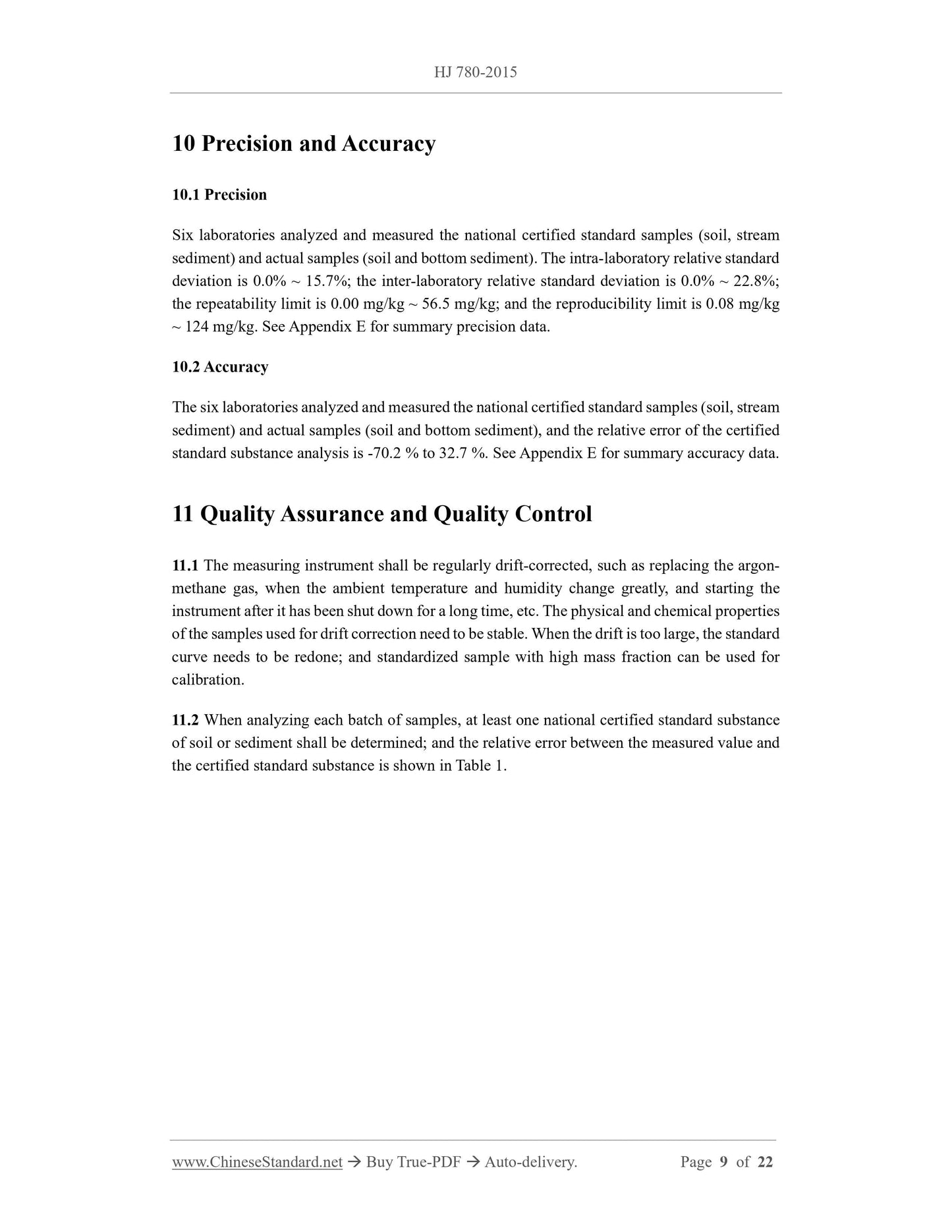1
/
of
6
www.ChineseStandard.us -- Field Test Asia Pte. Ltd.
HJ 780-2015 English PDF
HJ 780-2015 English PDF
Regular price
$390.00
Regular price
Sale price
$390.00
Unit price
/
per
Shipping calculated at checkout.
Couldn't load pickup availability
HJ 780-2015: Soil and sediment - Determination of inorganic element - Wavelength dispersive X-ray fluorescence spectrometry
Delivery: 9 seconds. Download (and Email) true-PDF + Invoice.Get Quotation: Click HJ 780-2015 (Self-service in 1-minute)
Newer / historical versions: HJ 780-2015
Preview True-PDF
Scope
This Standard specifies the wavelength dispersive X-ray fluorescence spectrometry method forthe determination of 25 inorganic elements and 7 oxides in soil and sediment.
This Standard is application to the determination of 25 inorganic elements and 7 oxides in
soil and sediment; including Arsenic (As), Barium (Ba), Bromine (Br), Cerium (Ce), Chlorine
(Cl), Cobalt (Co), Chromium (Cr), Copper (Cu), Gallium (Ga), Hafnium (Hf), Lanthanum (La),
Manganese (Mn), Nickel (Ni), Phosphorus (P), Lead (Pb), Rubidium (Rb), Sulfur (S),
Scandium (Sc), Strontium (Sr), Thorium (Th), Titanium (Ti), Vanadium (V), Yttrium (Y), Zinc
(Zn), Zirconium (Zr), Silicon Dioxide (SiO2), Aluminum Oxide (Al2O3), Ferric Oxide (Fe2O3),
Potassium Oxide (K2O), Sodium Oxide (Na2O), Calcium Oxide (CaO), Magnesium Oxide
(MgO).
The detection limit of this method for 22 inorganic elements is 1.0mg/kg~50.0mg/kg; the lower
limit for determination is 3.0mg/kg~150mg/kg. The detection limit for 7 oxides is
0.05%~0.27%; the determination lower limit is 0.15%~0.81%. See Appendix A for details.
Basic Data
| Standard ID | HJ 780-2015 (HJ780-2015) |
| Description (Translated English) | Soil and sediment - Determination of inorganic element - Wavelength dispersive X-ray fluorescence spectrometry |
| Sector / Industry | Environmental Protection Industry Standard |
| Word Count Estimation | 18,187 |
| Date of Issue | 2015-12-14 |
| Date of Implementation | 2016-02-01 |
| Quoted Standard | GB 17378.3; GB 17378.5; HJ/T 166 |
| Regulation (derived from) | Ministry of Environment Announcement 2015 No.85 |
| Issuing agency(ies) | Ministry of Ecology and Environment |
| Summary | This Standard specifies the determination in soil and sediment 25 kinds of inorganic elements and 7 oxides wavelength dispersive X-ray fluorescence spectrometry. This Standard applies to soil and sediment for 25 inorganic elements measured and 7 oxides, including arsenic (As), barium (Ba), bromine (Br), cerium (Ce), chlorine (C1), cobalt (Co), chromium (Cr), copper (Cu), gallium (Ga), hafnium (Hf), lanthanum (La), manganese (Mn), Nickel (Ni), phosphorus (P), lead (Pb), rubidium (Rb), sulfur (S), scandium (Sc), strontium (Sr), thorium (Th), titanium (Ti), vanadium (V), yttrium (Y), zinc (Zn), zirconium (Zr), silicon dioxide (Si02), aluminum oxide (A1203), ferric oxide (Fe203), potassium oxide (K20), sodium oxide (Na2O), calcium oxide (CaO), magnesium oxide (MgO). |
Share
